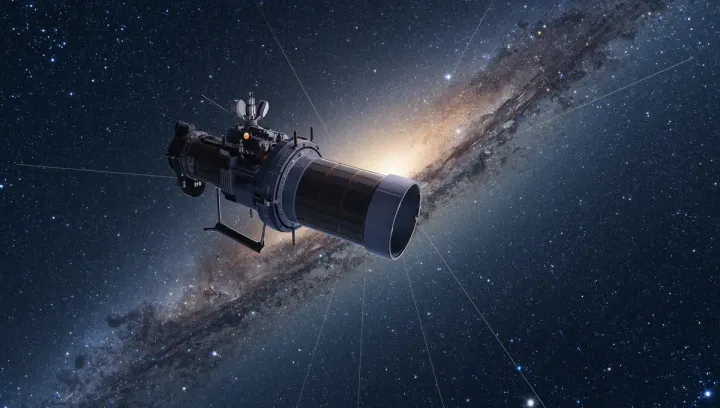
A Black Hole's 'Heartbeat' That Challenges Our Understanding of Physics
In the cosmic zoo, black holes are the weirdest and most misunderstood beasts. We think we understand the basic rules: they swallow matter, the matter gets superheated, shines brightly, and then disappears forever. But every now and then, one of them does something so bizarre it forces everyone to tear up the manual.
Enter IGR J17091-3624, a black hole 28,000 light-years away nicknamed the “heartbeat” for its rhythmic pulses of brightness. Recently, astronomers pointed NASA’s Imaging X-ray Polarimetry Explorer (IXPE) telescope at it, and what they saw simply doesn’t add up.
A Contradiction That Challenges the Models
The issue lies with the polarization of the X-rays emitted from the black hole’s “corona”-the inner region of superheated plasma. Polarization tells us about the geometry and alignment of the light source. IXPE measured a polarization degree of 9.1%, a surprisingly high value.
According to the theoretical models we’ve used for years, such high polarization means we are viewing the corona nearly edge-on, where its structure appears more ordered. The problem? Other observations of the same black hole suggest we are not viewing it edge-on. The two pieces of information directly contradict each other. It’s like finding polar bear tracks in the Sahara; one of your assumptions has to be wrong.
Powerful Winds or Runaway Coronas?
The scientists, now scratching their heads, have proposed two scenarios to try and explain this anomaly, and both of them challenge conventional wisdom about black holes.
-
Strong Winds from the Accretion Disk: The first hypothesis is that powerful winds are being launched from the disk of matter feeding the black hole. These winds would scatter the X-rays in a way that increases their polarization, even if we aren’t looking at the system from the side. If true, it means these winds are a much more critical piece of the puzzle of black hole growth than we thought.
-
The Corona in Relativistic Motion: The second idea is even wilder. It suggests the corona itself isn’t stationary but is moving outward at extraordinary speeds, close to the speed of light. The relativistic effects of this motion could amplify the polarization of the X-rays we measure.
Both models can reproduce the IXPE data, but they force us to accept that the environments around black holes are far more chaotic and dynamic than our simplified models predicted.
Science Loves a Good Mystery
This discovery is a perfect example of how science actually works. It’s not a collection of immutable facts, but a constant process of finding anomalies that force us to refine (or throw out) our theories. The “heartbeat” of this black hole isn’t just a curiosity; it’s a clue that we’re missing a fundamental piece in our understanding of the physics of these objects.
As study co-author Maxime Parra said, “Astronomers could expect future observations to yield even more surprising polarization degree measurements.” In other words: the more we look, the less we understand. And that’s the best part of science.
Primary Source: The findings were published in the journal Monthly Notices of the Royal Astronomical Society. A preprint of the study is available on arXiv.org.


